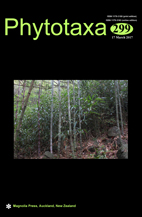Abstract
The vast majority not only of dinophytes, but also of Peridiniales, live in the marine environment, and some 350 (out of ca 2.500) species are present in freshwater habitats (Mertens et al. 2012). Many freshwater Peridiniales constitute small and only distantly related species groups embedded in predominantly marine clades (e.g., Apocalathium, Chimonodinium, Naiadinium in the Thoracosphaeraceae; species assigned to “Peridiniopsis” in the Kryptoperidiniaceae; Zhang et al. 2011b, Gottschling & Söhner 2013, Annenkova et al. 2015; Fig. 1). However, the most distinguished freshwater group of the Peridiniales are the Peridiniaceae including the type species, Peridinium cinctum, and other frequently encountered species such as Peridinium bipes, Peridinium volzii and Peridinium willei.

